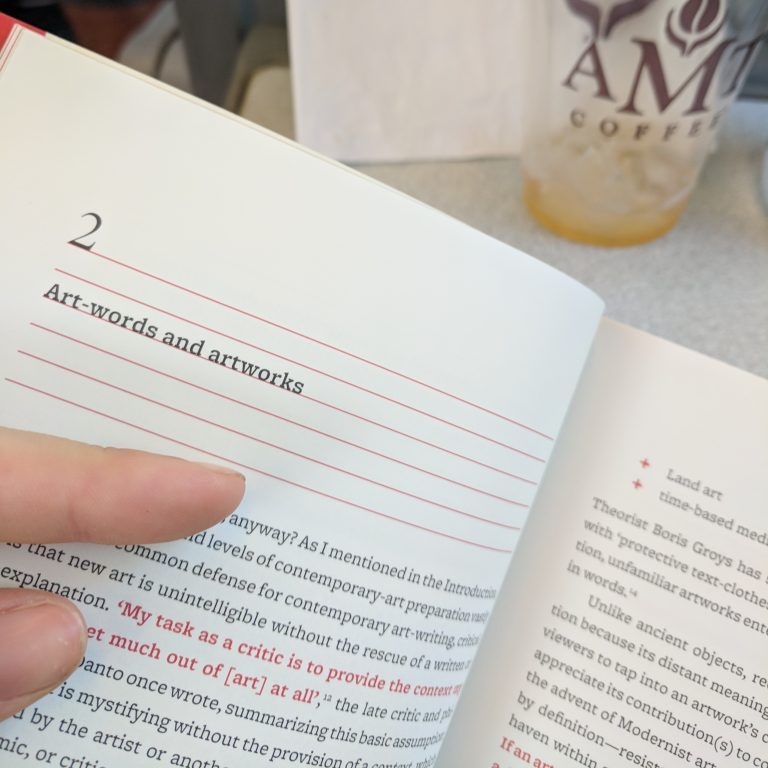This week we received the prompt:
Progress your cultural production – your practice – by identifying three to five processes that organise how you work. Blog about these. Discuss what these are, why they’re important and what you’ve been able to accomplish thanks to prioritising them. Work with examples – so ground your reflections in concrete details.
While I have always been involved in cultural production of some form, I have done so in a very collaborative and – I would say – supportive capacity. It doesn’t feel natural to me to describe what I do as a ‘practice’. It’s also challenging to draw lines around my work as I have performed widely varying roles and still do so regularly.
My work has involved the following processes:
- Writing and editing (journalism, communications and marketing, content creation, bid writing and fundraising)
- Research-based practice (engaging with research and contemporary cultural discourse, and bringing in first-person experiences)
- The presentation of words and image (print and graphic design, and video)
- In addition to administration (evaluation, analysis, planning, strategy), cultural production and relationship building.
While in recent years, most of my work within cultural production has been from within a particular artistic territory, which I could describe as:
- Socially and politically engaged
- Made in collaboration with people, both artists and non-artists
- Interested in everyday life
- Creating portraits of people and places that reveal complexity and interconnectedness (provoking sonder)
- Creating bridges between people from different cultural backgrounds or with different life experiences and perspectives.
In my video for U1 I described what I do as helping “artists to find the right words to talk about their work, in order to connect with others, with the end goal of helping more people to experience more art”. This feels true, but also glosses over the fact that I don’t only work with words, but with visuals and communication more broadly. It also leaves behind my previous practice in journalism, which was about looking top-down at cultural production within the country, and sharing stories and information – sometimes generated through my own research – in order to support cultural production.
Both beautiful and useful
A through line from my early journalism work to the communications and fundraising work I do now within this particular artistic territory, is an interest in the value of art both socially and politically; in its ability to build understanding and connection and to improve individual and collective wellbeing.
At Arts Professional, I reported on and commissioned a lot of material around the argument for ‘everyday creativity’ as a funding and policy priority and a guiding principle for arts organisations. We held space for the debate around the intrinsic versus instrumental values of art and culture. At Quarantine, I grappled with ways to articulate that a belief in the intrinsic value of art was central to the company’s practice, even though the work was socially and politically engaged and it produced instrumental benefits. I initiated a research project on the cultural value of beauty, which I didn’t get to see to fruition (sadly) as I left the company before it was fully commissioned, but that became a rich and interesting investigation into the possibility of articulating these intrinsic benefits. These experiences inform how I approach writing about art and culture, especially in making the case for funding. My experiences in cultural production have let me engage deeply with this debate and I hope to continue contributing to it meaningfully.


Leave a Reply